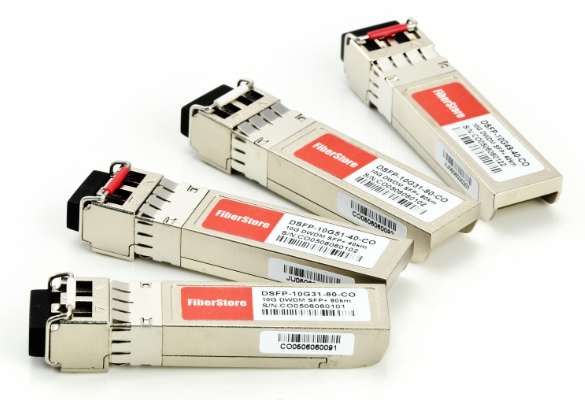Understanding DWDM in Optical Communication
Without optical communication we might be still sending mail, going to the newsstand to buy a newspaper, sending mail and postcards and renting movies, no internet would have been possible, no digital communications as we know it.
Among the many unsung technologies that make all this possible, Dense Wavelength Division Multiplexing (DWDM) is without any doubt one of the most important. As a kind of WDM technology, DWDM has the capability to send multiple signals on the same fiber, using different wavelengths. DWDM devices combine the output from several optical transmitters for transmission across a single optical fiber. At the receiving end, another DWDM device separates the combined optical signals and passes each channel to an optical receive. One of the nice characteristics of the optical fiber is that different channel can travel one close to the other with very little, almost negligible in most cases, crosstalk. Thanks to DWDM, we’re now able to pack 10 TBits/s of traffic per single fiber and send it more than 1000Km.
DWDM started as high end transport technology, but made its way to regional and metropolitan network and finally into transceivers. Several generation of DWDM transceivers have already been released (XENPAK, X2, XFP, SFP, SFP+), providing networking equipment not only with the capability to transport a huge amount of data with a single fiber, simplifying cabling and reducing cost, but also reducing the number of equipment needed. Before, if an operator wanted to connect 2 switches located some tens of kilometers apart, it needed non-coloured optics on the switch, connected with the same kind of optics on the transport system transponder shelf, this last piece of equipment did the conversion from non-DWDM wavelengths to DWDM wavelengths before they were optically multiplexed and transported over the DWDM link, the opposite process at receiving site. With DWDM transceivers directly on the switch, they can be connected directly to the optical multiplexing gear. It is evident that this solution has numerous advantages.

If it is clear that DWDM optics come with great advantages, but the device is more complex and more optical variables comes into play. With uncoloured optics everything is pretty simple , they come with a “distance” tag attached (10km, 40km, 300m), power budget is pretty much the only parameter that the end user should care about. With DWDM there is no specific target distance power levels are of course still important, but other parameter, such as OSNR (optical signal to noise ratio) and CD (chromatic dispersion) come into play, in fact, often specifications are given in the form of a combination of the three mentioned parameters.
An optical signal travelling on a fiber experiences an attenuation of about 0.2dB/Km, so if you want to transmit it for long distances it needs to be amplified along the way and probably more than once. Erbium doped fiber amplifiers (EDFAs) do exactly this, but, at every amplifying stage, noise is added to the signal. The longer you want to go, the more amplifiers you need, the noisier the signal at the end of the line. Below a certain OSNR, which depends on the device to device, becomes impossible to detect the signal with an acceptable bit error rate.
DWDM is ready made for long-distance telecommunications operators that use either point-to-point or ring topologies. It provides ultimate scalability and reach for fiber networks. Without the capacity and reach of DWDM systems, most cloud-computing solutions today would not be feasible. Establishing transport connections as short as tens of kilometers to enabling nationwide and transoceanic transport networks, DWDM is the workhorse of all the bit-pipes keeping the data highway alive and expanding.